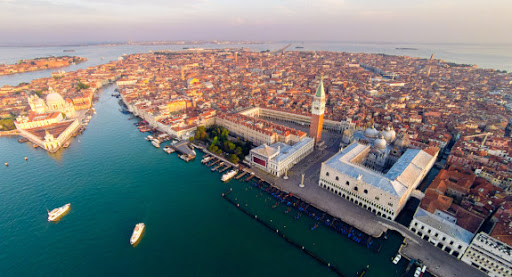And for the appassionate of the 20th Century art, the perfect destination is the Peggy Guggenheim museum. It hosts the most important collection of European and American art of that period, with works by Pollock, Picasso, Kandinsky, Duchamp and de Chirico. Astonishing is also the location of the museum: it is hosted in an unfinished palace, Palazzo Venier dei Leoni, which overlooks the Canal Grande.
After a deep immersion in Venice’s beauty, it is now time to relax and taste its fantastic gastronomy. One of the most typical gastronomic experiences in the city is to have cicchetti. They are traditional appetizers, mainly bruschettas, accompanied by a glass of wine, or Spritz, a cocktail made with wine and soda water.


